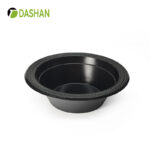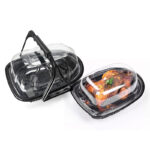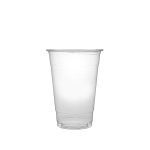Quick Summary
Bagasse tableware is biodegradable, compostable, microwave-safe, and water-resistant, offering a sustainable alternative to single-use plastics. Real-world studies and case examples show significant waste reduction, environmental benefits, and practical usability, suitable for restaurants, catering, delivery, and takeout services.
As environmental concerns grow worldwide, businesses and consumers are actively seeking alternatives to single-use plastics. Bagasse, the fibrous byproduct of sugarcane, has emerged as one of the most promising materials for sustainable food packaging. It is plant-based, biodegradable, compostable, and offers multiple functional benefits, making it ideal for plates, bowls, cups, clamshell boxes, and takeaway containers.
Understanding Bagasse

Bagasse is the fibrous residue left after sugarcane stalks are processed for juice extraction. Traditionally, this byproduct was discarded or burned, contributing to environmental pollution. Today, bagasse can be molded into durable, eco-friendly containers that serve the foodservice industry. By converting agricultural waste into practical packaging, bagasse reduces the need for virgin materials and minimizes landfill waste.
Products made from bagasse include:
-
Takeaway containers and clamshell boxes
-
Cups for hot and cold beverages
These products not only provide a sustainable solution but also offer performance comparable to traditional plastic or foam containers.
Key Functional Advantages
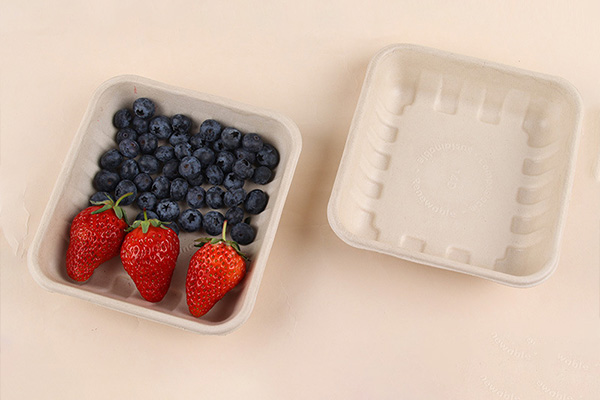
Bagasse tableware combines environmental responsibility with practical functionality. Its primary advantages include:
1. Biodegradability
Bagasse is fully biodegradable, breaking down in 60–90 days under industrial composting conditions. Unlike plastics, which can persist in the environment for hundreds of years, bagasse naturally decomposes without leaving harmful residues.
2. Compostability
Beyond biodegradability, bagasse is compostable. This means that used containers can be processed in composting facilities, generating nutrient-rich compost for soil, further contributing to a circular economy.
3. Microwave Safety
Most bagasse products are microwave-safe, capable of withstanding temperatures up to 220°F (104°C). This allows consumers to reheat meals directly in their containers without concerns about chemical leaching or structural damage.
4. Water and Oil Resistance
Bagasse is water- and oil-resistant, enabling it to hold both dry and moist foods for short periods. Products often include natural PLA or wax coatings to enhance resistance while remaining compostable. This makes bagasse ideal for soups, curries, salads, and oily dishes commonly used in food delivery services.
5. Recyclability
Although primarily designed for composting, clean bagasse containers can also be recycled in facilities that handle paper materials. However, composting remains the preferred disposal method for optimal environmental benefits.
6. Durability
Bagasse tableware is sturdy and reliable, comparable in strength to some plastics and disposable foam containers. It can support heavy meals and maintain its shape without warping during typical foodservice use.
7. Carbon Footprint Reduction
By utilizing sugarcane byproducts, bagasse helps reduce carbon emissions associated with raw material extraction and production. This sustainable approach aligns with corporate responsibility goals and consumer expectations for greener packaging.
Safety and Regulatory Compliance
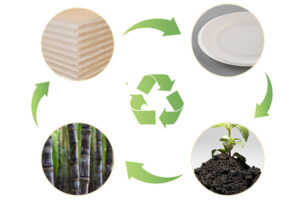
Bagasse is non-toxic and food-safe, making it a safer alternative to plastic or foam containers. Key safety aspects include:
-
Free from BPA, PFAS, and heavy metals
-
Many products are chlorine- and bleach-free
-
FDA-approved for direct food contact
-
Compliant with EU Regulation 1935/2004 for food packaging
Due to these certifications, bagasse containers are widely used for children’s meals, hospital trays, catering, and takeout services, offering peace of mind for both providers and consumers.
Microwave and Thermal Performance
One of bagasse’s significant advantages is its microwave safety. Containers can endure typical reheating without melting, warping, or leaching harmful chemicals. Compared to polypropylene and other plastics, bagasse maintains structural integrity and food safety at higher temperatures.
-
Practical usage: Ideal for reheating leftovers or serving hot meals in takeaway containers.
-
Structural reliability: Does not leak or warp under short-term heat exposure.
-
Health benefits: Avoids release of toxic substances common in certain plastics when heated.
Water and Oil Resistance in Real Use
Bagasse is naturally water-resistant, but coatings can enhance its performance for semi-liquid foods. Key points include:
-
Maintains integrity with wet or oily foods for 30–60 minutes
-
Suitable for soups, curries, stews, and salads
-
Coated with PLA or natural wax to improve moisture resistance while remaining fully compostable
This makes bagasse an attractive choice for restaurants, food delivery services, and catering businesses looking for environmentally responsible packaging.
Flammability Considerations
Although bagasse is technically flammable, it is safe for normal foodservice conditions:
-
Ignition point: Around 220°C (428°F)
-
Safe for microwaves: Short-term exposure is fine
-
Not suitable for ovens or open flames
Proper usage ensures that bagasse is as safe as cardboard or paper-based packaging and safer than some plastics that may release chemicals at lower temperatures.
Scientific Insights
Compostability
Studies show that bagasse containers decompose rapidly in composting conditions. In comparison to polystyrene or traditional plastics, which persist for decades, bagasse returns to the soil naturally, supporting sustainability.
Thermal Resistance
Bagasse can withstand heat up to 220°F (104°C) without deformation, while some plastics start leaching at much lower temperatures. This thermal stability makes it suitable for hot meals, soups, and reheated dishes.
Case Studies and Practical Applications
BioBowl Project, Australia
-
Over 150 food stalls switched to bagasse bowls
-
Achieved a 90% reduction in landfill waste
-
Reported a 25% increase in customer satisfaction
-
Fully compliant with composting regulations
Dutch Hospital Catering
-
Replaced plastic trays with bagasse meal trays
-
Reduced packaging waste by 35%
-
Cut dishwashing energy by 45%
-
Improved patient perception of hygiene and sustainability
These examples highlight how bagasse products perform effectively in real-world environments while promoting ecological responsibility.
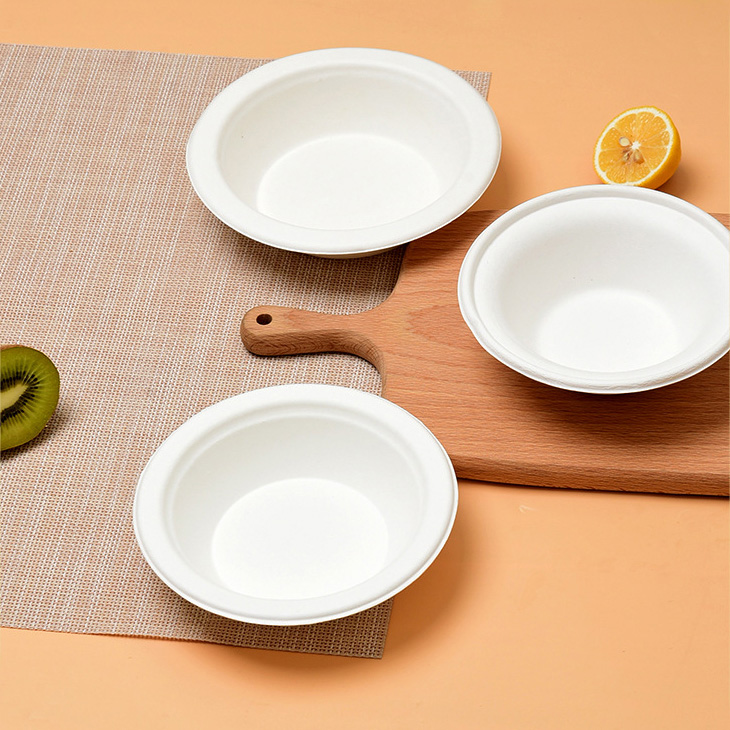
Advantages for Foodservice Industry
-
Restaurants and Cafés: Reduce plastic waste while providing durable, microwave-safe containers.
-
Catering Services: Easy-to-handle trays and clamshell boxes for events.
-
Takeout and Delivery: Water-resistant bowls and plates maintain quality during transport.
-
Healthcare and Institutions: Safe, non-toxic containers for hospitals, schools, and daycare facilities.
Bagasse tableware combines environmental responsibility with practical benefits, making it a preferred choice across industries.
Conclusion
Bagasse tableware is a practical, safe, and eco-friendly solution for modern foodservice. With its combination of biodegradability, compostability, heat resistance, and durability, bagasse containers reduce environmental impact while providing convenience and reliability for businesses and consumers. Choosing bagasse supports sustainable practices and contributes to a cleaner, greener future.
Reference Links
-
Singh, R., et al. (2021). Comparative Degradation of Bagasse vs. Polystyrene in Composting Environments. Waste Management Journal.
-
Nair, S., & Zhang, T. (2020). Thermal Resistance of Biodegradable Packaging. ScienceDirect.
-
City of Sydney Council. (2022). BioBowl Project Sustainability Report. https://www.cityofsydney.nsw.gov.au
-
European Commission. (2020). EU Food Contact Materials Regulation (1935/2004). https://ec.europa.eu/
-
Wikipedia Contributors. (2023). Bagasse. https://en.wikipedia.org/wiki/Bagasse

